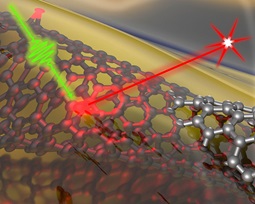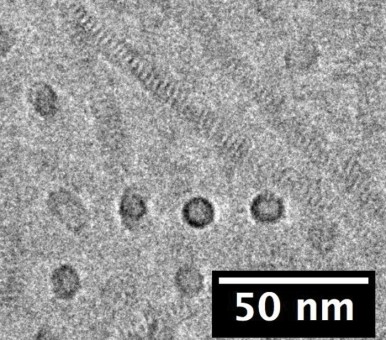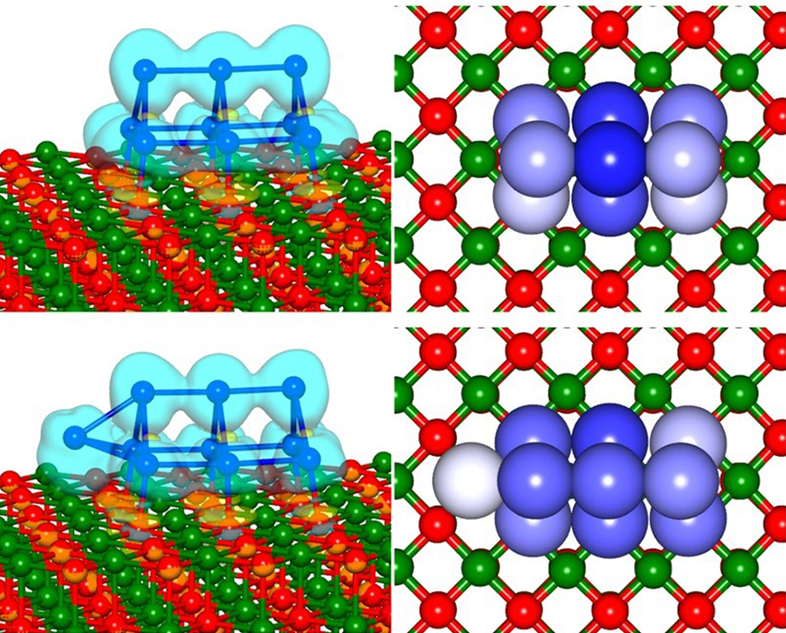It’s always interesting to get some insight into how someone else sees the nanotechnology effort in Canada.
First, there have been two basic approaches internationally. Some countries have chosen to fund nanotechnology/nanoscience research through a national initiative/project/council/etc. Notably the US, the UK, China, and Russia, amongst others, have followed this model. For example, the US National Nanotechnology Initiative (NNI) (a type of hub for research, communication, and commercialization efforts) has been awarded a portion of the US budget every year since 2000. The money is then disbursed through the National Science Foundation.
Canada and its nanotechnology industry efforts
By contrast, Canada has no such line item in its national budget. There is a National Institute of Nanotechnology (NINT) but it is one of many institutes that help make up Canada’s National Research Council. I’m not sure if this is still true but when it was first founded, NINT was funded in part by the federal government and in part by the province of Alberta where it is located (specifically, in Edmonton at the University of Alberta). They claim the organization has grown since its early days although it looks like it’s been shrinking. Perhaps some organizational shuffles? In any event, support for the Canadian nanotechnology efforts are more provincial than federal. Alberta (NINT and other agencies) and Québec (NanoQuébec, a provincially funded nano effort) are the standouts, with Ontario (nano Ontario, a self-organized not-for-profit group) following closely. The scene in Canada has always seemed fragmented in comparison to the countries that have nanotechnology ‘hubs’.
Patrick Johnson in a Dec. 22, 2015 article for Geopolitical Monitor offers a view which provides an overview of nanotechnology in the US and Canada, adds to the perspective offered here, and, at times, challenges it (Note: A link has been added),
The term ‘nanotechnology’ entered into the public vernacular quite suddenly around the turn of the century, right around the same time that, when announcing the US National Nanotechnology Initiative (NNI) in 2001 [2000; see the American Association for the Advancement of Science webpage on Historical Trends in Federal R&D, scroll down to the National Nanotechnology Initiative and click on the Jpg or Excel links], President Bill Clinton declared that it would one day build materials stronger than steel, detect cancer at its inception, and store the vast records of the Library of Congress in a device the size of a sugar cube. The world of science fiction took matters even further. In his 2002 book Prey, Michael Creighton [Michael Crichton; see Wikipedia entry] wrote of a cloud of self-replicating nanorobots [also known as, nanobots or self-assemblers] that terrorize the good people of Nevada when a science experiment goes terribly wrong.
Back then the hype was palpable. Federal money was funneled to promising nanotech projects as not to fall behind in the race to master this new frontier of science. And industry analysts began to shoot for the moon in their projections. The National Science Foundation famously predicted that the nanotechnology industry would be worth $1 trillion by the year 2015.
Well here we are in 2015 and the nanotechnology market was worth around $26 billion in [sic] last year, and there hasn’t even been one case of a murderous swarm of nanomachines terrorizing the American heartland. [emphasis mine]
Is this a failure of vision? No. If anything it’s only a failure of timing.
The nanotechnology industry is still well on its way to accomplishing the goals set out at the founding of the NNI, goals which at the time sounded utterly quixotic, and this fact is increasingly being reflected in year-on-year growth numbers. In other words, nanotechnology is still a game-changer in global innovation, it’s just taking a little longer than first expected.
…
The Canadian Connection
Although the Canadian government is not among the world’s top spenders on nanotechnology research, the industry still represents a bright spot in the future of the Canadian economy. The public-private engine [emphasis mine] at the center of Canada’s nanotech industry, the National Institute for Nanotechnology (NINT), was founded in 2001 with the stated goal of “increasing the competitiveness of Canadian companies; creating technology solutions to meet the needs of society; expanding training programs for researchers and entrepreneurs; and enhancing Canada’s stature in the world of nanotechnology.” This ambitious mandate that NINT set out for itself was to be accomplished over the course of two broad stages: first a ‘seeding’ phase of attracting promising personnel and coordinating basic research, and the then a ‘harvesting’ phase of putting the resulting nanotechnologies to the service of Canadian industry.
Recent developments in Canadian nanotechnology [emphasis mine] show that we have already entered that second stage where the concept of nanotechnology transitions from hopeful hypothetical to real-world economic driver
I’d dearly like to know which recent developments indicate Canada’s industry has entered a serious commercialization phase. (It’s one of the shortcomings of our effort that communication is not well supported.) As well, I’d like to know more about the “… public-private engine at the center of Canada’s nanotech industry …” as Johnson seems to be referring to the NINT, which is jointly funded (I believe) by the federal government and the province of Alberta. There is no mention of private funding on their National Research Council webpage but it does include the University of Alberta as a major supporter.
I am intrigued and I hope there is more information to come.
US and its nanotechnology industry efforts
Dr. Ambika Bumb has written a Dec. 23, 2015 article for Tech Crunch which reflects on her experience as a researcher and entrepreneur in the context of the US NNI effort and includes a plea for future NNI funding [Note: One link added and one link removed],
Indeed, I am fortunate to be the CEO of a nanomedicine technology developer that extends the hands of doctors and scientists to the cellular and molecular level.
The first seeds of interest in bringing effective nano-tools into the hands of doctors and patients were planted in my mind when I did undergrad research at Georgia Tech. That initial interest led to me pursuing a PhD at Oxford University to develop a tri-modal nanoparticle for imaging a variety of diseases ranging from cancers to autoimmune disorders.
My graduate research only served to increase my curiosity so I then did a pair of post-doctoral fellowships at the National Cancer Institute and the National Heart Lung and Blood Institute. When it seemed that I was a shoe-in for a life-long academic career, our technology garnered much attention and I found myself in the Bay Area founding the now award-winning Bikanta [bikanta.com].
Through the National Nanotechnology Initiative (NNI) and Nanotechnology Research and Development Act of 2003, our federal government has invested $20 billion in nanoresearch in the past 13 years. The return on that investment has resulted in 628 agency‐to‐agency collaborations, hundreds of thousands of publications, and more than $1 trillion in revenue generated from nano‐enabled products. [emphasis mine]
Given that medical innovations take a minimum of 10 years before they translate into a clinical product, already realizing a 50X return is an astounding achievement. Slowing down would be counter-intuitive from an academic and business perspective.
Yet, that is what is happening. Federal funding peaked half a decade ago in 2010. [emphasis mine] NNI investments went from $1.58B in 2010 to $1.170B in 2015 (in constant dollars), a 26% drop. The number of nano-related papers published in the US were roughly 25 thousand in 2013, while the EU and China produced 33 and 35 thousand, respectively.
History has shown repeatedly how the United States has lost an early competitive advantage in developing high‐value technologies to international competition when commercialization infrastructure was not adequately supported.
Examples include semiconductors, advanced batteries for vehicles, and cement‐based construction materials, all of which were originally developed in the United States, but are now manufactured elsewhere.
…
It is now time for a second era – NNI 2.0. A return to higher and sustained investment, the purpose of NNI 2.0 should be not just foundational research but also necessary support for rapid commercialization of nanotechnology. The translation of bench science into commercial reality requires the partnership of academic, industrial, federal, and philanthropic players.
I’m not sure why there’s a difference between Johnson’s ” … worth around $26 billion in [sic] last year …] and Bumb’s “… return on that investment has resulted … more than $1 trillion in revenue generated from nano‐enabled products.” I do know there is some controversy as to what should or should not be included when estimating the value of the ‘nanotechnology enterprise’, for example, products that are only possible due to nanotechnology as opposed to products that already existed, such as golf clubs, but are enhanced by nanotechnology.
Bumb goes on to provide a specific example from her own experience to support the plea,
When I moved from the renowned NIH [US National Institutes of Health] on the east coast to the west coast to start Bikanta, one of the highest priority concerns was how we were going to develop nanodiamond technology without access to high-end characterization instrumentation to analyze the quality of our material. Purchasing all that equipment was not financially viable or even wise for a startup.
…
We were extremely lucky because our proposal was accepted by the Molecular Foundry, one of five DOE [US Department of Energy]-funded nanoscience user facilities. While the Foundry primarily facilitates basic nanoscience projects from academic and national laboratory users, Fortune 500 companies and startups like ours also take advantage of its capabilities to answer fundamental questions and conduct proof of concept studies (~10%).
…
Disregarding the dynamic intellectual community for a minute, there is probably more than $150M worth of instrumentation at the Foundry. An early startup would never be able to dream of raising a first round that large.
One of the factors of Bikanta’s success is that the Molecular Foundry enabled us to make tremendous strides in R&D in just months instead of years. More user facilities, incubator centers, and funding for commercializing nanotech are greatly needed.
Final comments
I have to thank Dr. Bumb for pointing out that 2010 was the peak for NNI funding (see the American Association for the Advancement of Science webpage on Historical Trends in Federal R&D, scroll down to the National Nanotechnology Initiative and click on the Jpg or Excel links). I erroneously believed (although I don’t appear to have written up my belief; if you find any such statement, please let me know so I can correct it) that the 2015 US budget was the first time the NNI experienced a drop in funding.
While I found Johnson’s article interesting I wasn’t able to determine the source for his numbers and some of his material had errors that can be identified immediately, e.g., Michael Creighton instead of Michael Crichton.


